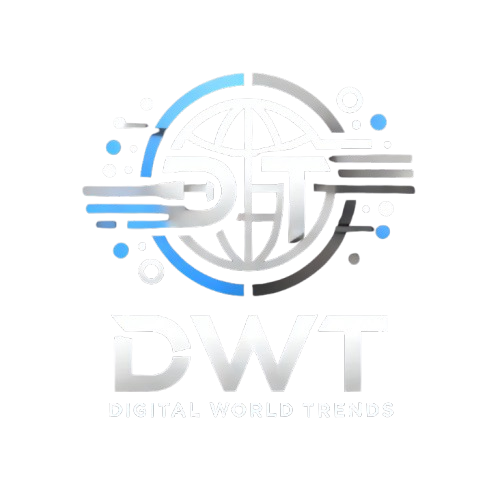In today’s digital age, our lives are deeply intertwined with the internet. From online shopping and banking to social networking and streaming, we’re constantly connected. But with this connectivity comes a crucial question: How secure is the internet we rely on? Despite its conveniences, the internet is also home to a myriad of threats, from hackers and scams to data breaches and spyware. Understanding these risks is vital for everyone, whether you’re a tech enthusiast, a casual user, or a business owner.
This article will dive into the nature of internet insecurity, explore common cyber threats, and provide actionable tips for staying safe online. With engaging insights and practical advice, you’ll be equipped to enjoy the web with greater confidence.
The Current State of Internet Insecurity
In recent years, data breaches, ransomware attacks, and online scams have surged. Large corporations like Facebook, Yahoo, and Marriott have all been victims of major breaches, affecting millions worldwide. For individuals, this means that personal data—including names, addresses, emails, and even financial details—can be exposed.
According to recent cybersecurity statistics, nearly 50% of small businesses have faced a cyberattack, and phishing scams have reached unprecedented levels, with scammers leveraging platforms like email, social media, and SMS to steal data. And it’s not just businesses or high-profile individuals; anyone using the internet can be targeted.
Common Cyber Threats in the Digital World
To navigate the digital world safely, it’s essential to understand the most common threats:
- Phishing Attacks: Phishing is one of the most common scams, where attackers trick individuals into providing sensitive information by posing as trustworthy entities. Whether it’s an email claiming to be from your bank or a fake social media message, phishing is designed to steal passwords, credit card numbers, and other personal data.
- Ransomware: In this form of attack, hackers take control of a computer or network and demand a ransom to release it. Recent high-profile ransomware attacks have disrupted entire organizations, from hospitals to government bodies, causing significant operational and financial damage.
- Spyware: Spyware is malicious software that secretly monitors a user’s activities. It can track browsing habits, log keystrokes, and even record passwords. Often, spyware can be installed unknowingly through infected apps or compromised websites.
- Malware: Malware includes any software intentionally designed to cause damage, from viruses and worms to trojans and adware. It often disguises itself as legitimate software, tricking users into downloading it.
- DDoS Attacks: Distributed Denial-of-Service (DDoS) attacks flood a website with an overwhelming amount of traffic, rendering it inaccessible. These attacks can bring down websites, apps, and services, causing major disruptions for businesses and users alike.
Why Internet Security Matters More Than Ever
The internet has evolved into a lifeline, connecting people globally and driving innovation. But with more people online, there are more targets for cybercriminals. The importance of security grows as we use the Internet for tasks like banking, telemedicine, remote work, and personal communication.
Cybersecurity doesn’t just protect our data; it safeguards the infrastructure of modern society. Cyberattacks can cripple businesses, disrupt essential services, and even pose risks to national security. For individuals, internet security means preserving privacy, avoiding financial loss, and protecting sensitive information from falling into the wrong hands.
4. How to Protect Yourself Online
Taking proactive steps to protect your data can make a big difference. Here are practical tips to enhance your online security:
Use Strong, Unique Passwords
Creating strong passwords is the first line of defense. Avoid using easily guessable passwords like “password123” or “qwerty.” Instead, use a combination of letters, numbers, and special characters. Even better, use a password manager to generate and store unique passwords for each account.
Enable Two-Factor Authentication (2FA)
Two-factor authentication adds an extra layer of security. With 2FA, logging in requires not only a password but also a second form of verification, like a text message or authentication app. This way, even if someone has your password, they can’t access your account without the second factor.
Be Cautious with Links and Attachments
Phishing scams rely on users clicking malicious links or opening harmful attachments. Avoid clicking on links or downloading attachments from unfamiliar senders. Always double-check the sender’s email address, and if something seems suspicious, it probably is.
Keep Software Updated
Outdated software often has vulnerabilities that cybercriminals exploit. Regularly updating your operating system, applications, and security software patches these weaknesses, making it harder for attackers to gain access.
Install Antivirus and Anti-Malware Software
Reliable antivirus and anti-malware programs can detect and remove threats before they cause damage. Invest in reputable security software and run regular scans on your devices.
Secure Your Home Network
Change the default password on your router, use WPA3 encryption, and keep your firmware updated. A strong home network setup makes it harder for cybercriminals to access your devices.
Practice Safe Social Media Habits
Cybercriminals can gather information about you from social media. Limit the amount of personal information you share publicly and review privacy settings on each platform. Be mindful of friend requests and messages from unknown accounts.
Internet Safety for Businesses
Businesses, large and small, face unique cyber risks. From protecting customer data to ensuring operational continuity, internet security is essential. For businesses, consider the following:
Employee Training and Awareness
Many security breaches occur due to employee mistakes, such as clicking on phishing emails or using weak passwords. Regular training helps employees recognize and avoid threats, reducing the risk of human error.
Data Backup and Recovery Plans
Having regular backups means you can restore data in the event of a cyberattack. Implement a data recovery plan to reduce downtime if a ransomware attack or data breach occurs.
Invest in Cyber Insurance
Cyber insurance policies cover costs associated with data breaches, including legal fees, customer notification, and reputation management. For businesses, cyber insurance can be a crucial part of an overall security strategy.
Implement Access Controls
Restrict access to sensitive data to only those who need it. By limiting permissions, you reduce the risk of accidental or malicious data exposure.
The Future of Internet Security
As technology advances, so do cyber threats. With emerging technologies like Artificial Intelligence (AI) and the Internet of Things (IoT), new security challenges arise. For example, AI can be used to detect and prevent cyberattacks, but it can also be exploited by hackers to develop more sophisticated attacks.
Similarly, IoT devices—such as smart home gadgets, wearables, and even medical devices—are becoming common. These devices, however, often have weaker security, making them vulnerable to cyberattacks. As our world becomes more connected, securing these devices will be a priority.
Conclusion: Embracing Security for a Safer Internet Experience
Internet insecurity is a shared concern. Whether you’re an individual safeguarding personal data, a small business protecting customer information, or a large enterprise securing a network, everyone has a role to play. By staying informed, practicing safe online habits, and embracing security best practices, we can all enjoy the benefits of the internet without compromising our safety.
Remember, the internet is a vast and powerful tool, and with the right precautions, we can navigate it safely. The more proactive we are, the less power cybercriminals have, paving the way for a secure, connected future.

